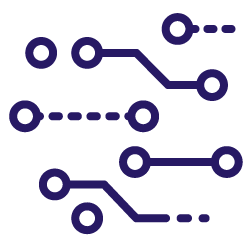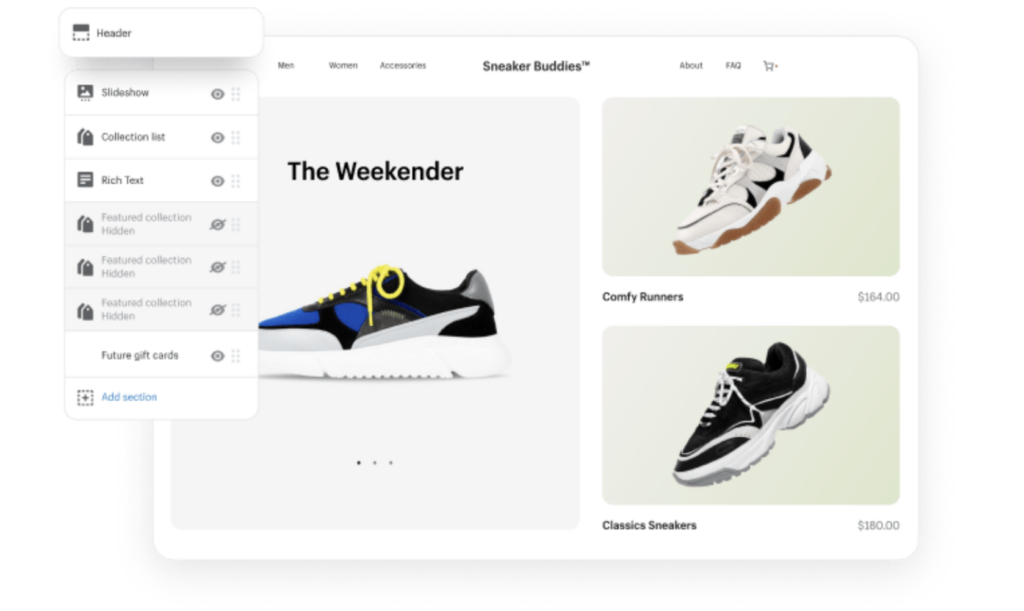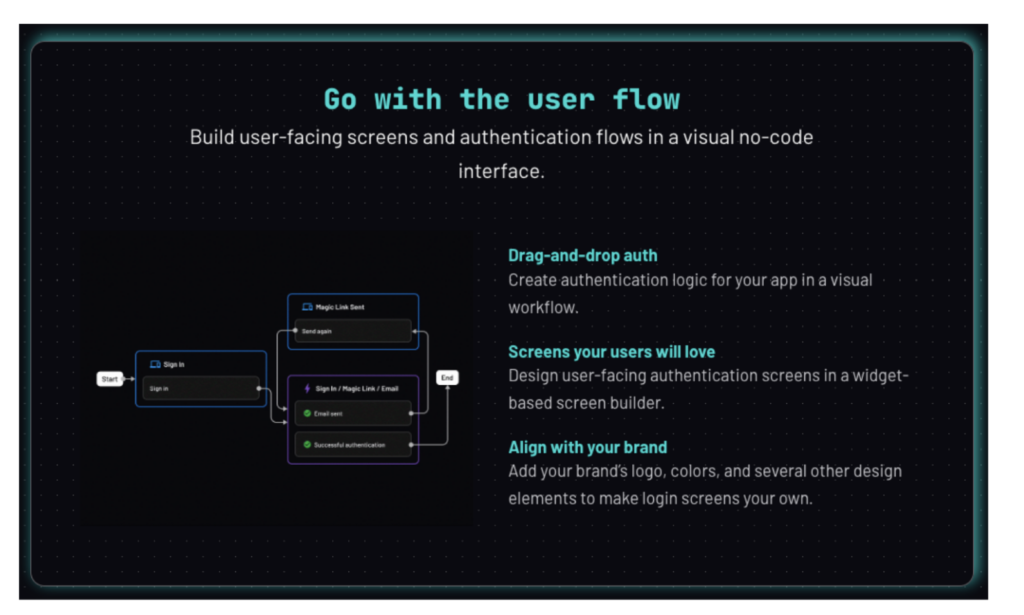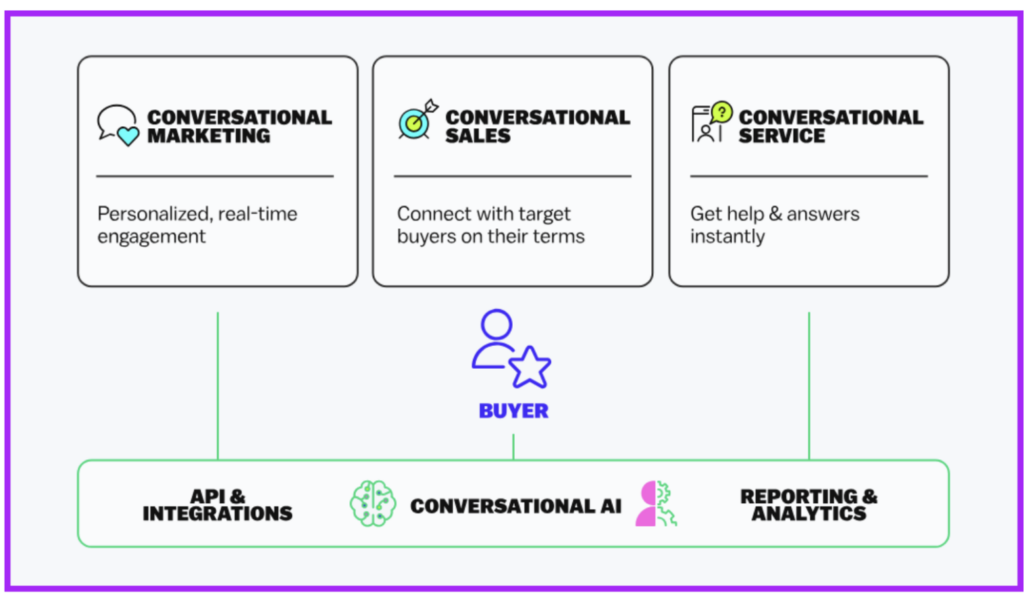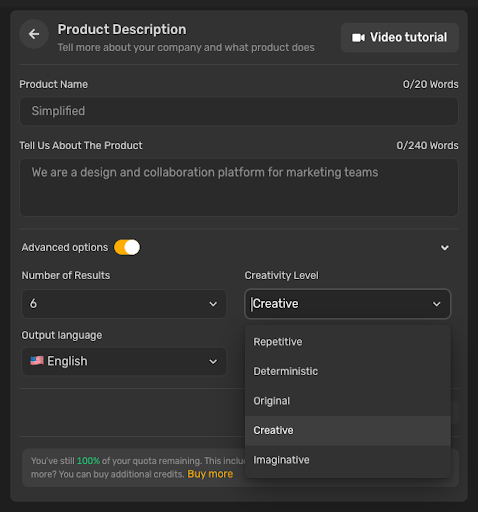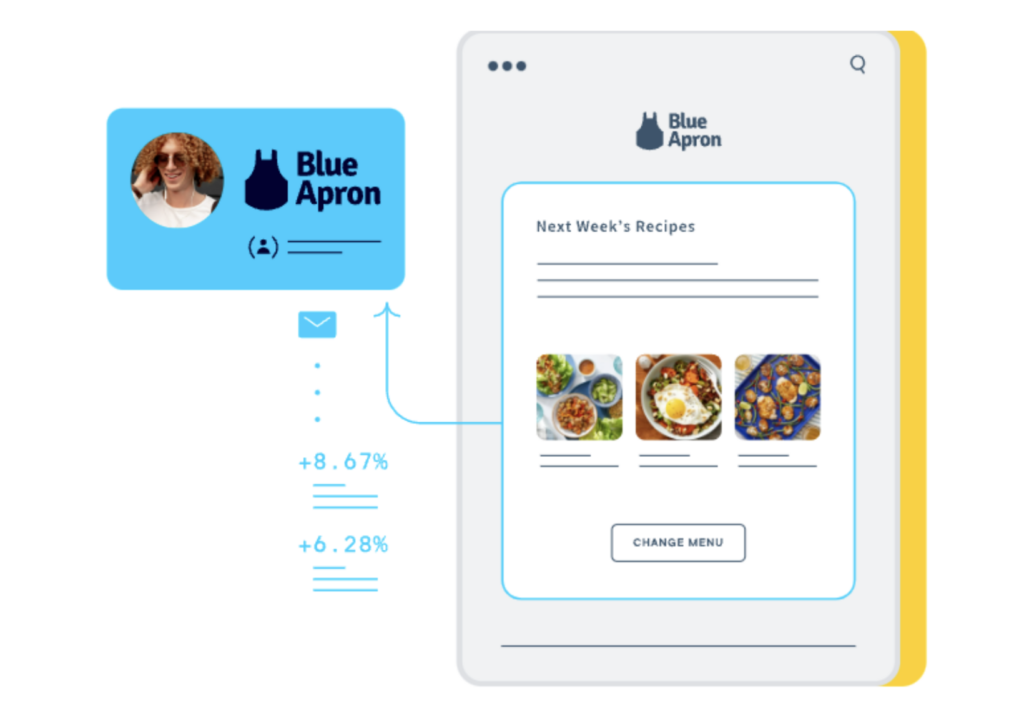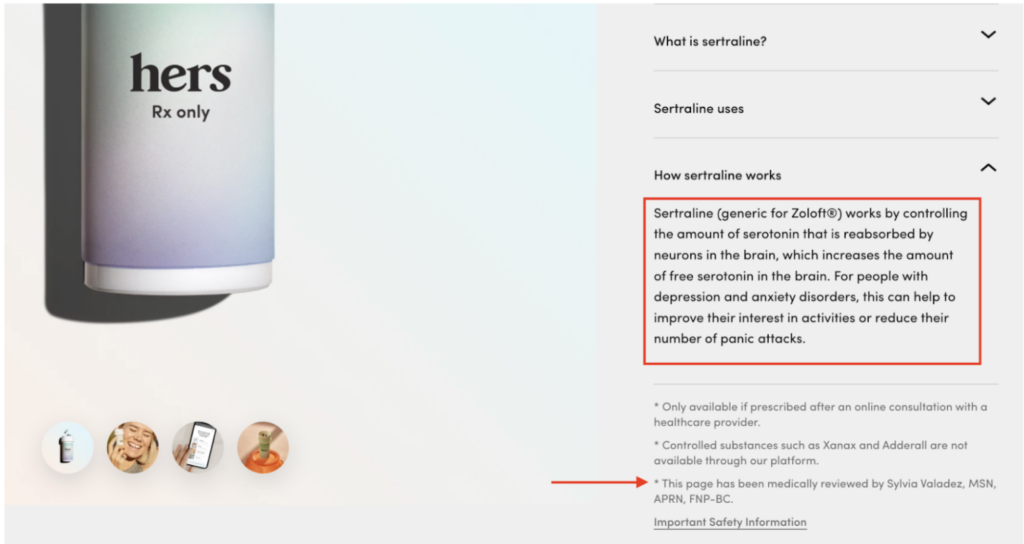It seems like all we read about these days is AI, but quite honestly, the longer it stays around and evolves, the more ways we can use it to positively impact our processes and business decisions.
Consumers are increasingly turning to e-commerce to fulfill their shopping needs. According to Shopify, the global e-commerce market is expected to total $6.3 trillion by the end of 2023.
That doesn’t mean running an e-commerce store is an easy business model. In fact, it’s quite the opposite when you have to compete against behemoths like Amazon, IKEA, and H&M.
Case in point: only 2.59% of e-commerce website visits convert into sales.
What is the best way to achieve conversion rate optimization at scale? Leveraging the power of AI tools to fill the gaps where human input can be useful elsewhere.
In this post, we’ll share a few ways AI tools can help step up your e-commerce strategy by creating a high-quality website and writing compelling product descriptions that speak directly to your buyer personas.
Benefits of AI tools for e-commerce
Using AI tools in the e-commerce space creates a domino effect that can improve your store’s profitability and conversion rate.
Some benefits of using AI tools include the following:
- Create personalized and interactive buying experiences
- Improve keyword research and SEO workflows
- Prevent fraudulent credit card transactions
- Provide 24/7 access to customer service
- Streamline the copywriting process
- Forecast future product demand
And that only begins to scratch the surface of what AI tools are capable of. The power of AI will continue to develop over the next decade.
While AI presents a transformative frontier for e-commerce, it’s crucial to understand that it’s not about replacing human capabilities but enhancing them.
Yes, AI excels in sifting through vast datasets, identifying patterns, and automating repetitive tasks. However, human expertise is irreplaceable for understanding context, emotions, and cultural nuances. Oh, and let’s not forget about the personalized touch.
Here are a few tips to achieve a harmonious blend of AI and human expertise.
Incorporate augmented decision-making
AI provides insights based on patterns and historical data, but humans still play a pivotal role in making final decisions.
For instance, while an AI tool can predict a surge in your product’s demand based on seasonal trends, your marketing team is the one that can factor in the implications of external factors such as current events or market changes.
Add a personal touch to customer service
Chatbots can handle frequently asked questions or routine queries. Human interaction matters most when it comes to solving complex issues with empathy.
A blend of AI automation and human touch provides efficiency without compromising customer satisfaction.
Enhance your quality control
AI can help write content or analyze inventory, but human eyes help guarantee the quality meets your brand standards.
Case in point. Automated assembly lines still hire humans to perform quality control. Why? A human has the eye to detect when a product running down the line doesn’t stand up to the proper quality standards. Maybe there’s a dent. Or the sizing is off. They can spot it instantly.
In short, to thrive in the competitive e-commerce landscape, you should view AI as a partner and not a replacement. Embracing this synergy will help you boost efficiency while maintaining a deep connection with your customers.
[Ebook] 5 KPIs that reveal top strategies for successful ecommerce SEO
5 ways to integrate AI into your e-commerce strategy
Let’s face it, writing thousands of unique product descriptions isn’t a walk in the park.
You need convincing descriptions that help inch shoppers closer to the checkout process. But you also have to repeat the process for every product (which is time-consuming and error-prone).
With the help of AI writing tools like Simplified and chatbots like Drift, you can significantly improve your e-commerce strategy.
Let’s take a closer look.
1. Build a highly secure website that checks the technical SEO boxes
Your website is your storefront. And without one, you don’t have a way of generating sales.
So, before diving straight into your copywriting, get your professional website up and running. You want a place where you can proudly display your products for sale.
Thankfully, drag-and-drop website builders like Shopify can help you create a professional e-commerce website without writing a single line of code.
But that’s just the tip of the iceberg. You can even add an extra layer of security with a drag-and-drop auth like Descope.
Why is this important? Google aims to recommend secure websites that don’t jeopardize user information. A breach in user data can erode confidence in both your website and your brand, negatively impacting SEO.
Search engines, especially Google, place a high emphasis on security and data protection. Websites that neglect these measures risk facing penalties.
With passwordless authentication, you can improve your customer experience (read: no more forgotten passwords) while protecting their information.
A fully optimized, secure website is a surefire way to boost your brand’s visibility and provide a stellar customer experience that’ll keep shoppers coming back for more.
But pushing your website live is only the first step. Next, it’s time to spruce up your technical SEO so your website is indexable by search engines and can rank higher on search engine results pages (SERPs).
Here’s a simple checklist to enhance your technical SEO:
- Responsive design: Does your website display and function correctly across devices, especially smartphones and tablets?
- Website speed: Does your website load within three seconds or pass Google’s PageSpeed Insights test?
- SSL certificate: Does your website use HTTPS to secure the data transfer between your site and visitors? Note: Search engines prefer secure websites.
- XML sitemap: Have you created an XML sitemap to improve your indexability?
- Robots.txt: Do you have a robots.txt file in place, and is it configured correctly? Pay close attention to pages or sections of your site that you want to crawl or avoid.
- Structured data and schema markup: Are you using structured data (schema markup) to provide search engines with additional information about your products, reviews, and prices to improve your chance of appearing in rich snippets?
- URL structure: Are your URLs SEO-friendly? Keep them short with relevant keywords. For example, https://www.abcstore.com/womens-high-rise-jeans instead of https://www.abcstore.com/prod12345.
- Internal linking: Do you have a clear website hierarchy where you add interlinks to relevant product pages to improve navigation and distribute page authority?
- 404 errors and redirects: Have you checked for broken links or pages that lead to 404 errors?
- Duplicate content: Are you using canonical tags to prevent duplicate content?
If you check off these major technical SEO to-dos, you’re well on your way to building a top-performing e-commerce site.
But remember that technical SEO is just one part of the overall SEO strategy. On-page SEO, backlinks, and user experience are equally vital components in ranking well in search results.
So, how can you improve the user experience? Well, that’s where AI comes into play in the form of a chatbot like Drift.
With Drift, you can give visitors real-time responses to their questions. That way, they won’t leave your site due to uncertainty or confusion. Lower bounce rates send positive signals to Google.
Plus, immediate customer support can differentiate between a sale and an abandoned cart.
What’s more is that you can program your Drift chatbot to offer product recommendations based on browsing patterns (read: tailor the shopping journey to the customer). Imagine a virtual sales assistant guiding users to products they’ll likely buy.
And for the icing on the cake, AI-powered chatbots collect a treasure trove of customer insights. When you can understand their pain points and preferences, you can create high-quality content that speaks directly to search intent.
The result? Relevant content that drives organic traffic to your site and converts leads into paying customers. What’s not to love?
2. Step up your keyword research
Targeting the right keywords will help make your products easier to find online, which means more sales and higher profits for your business. Sounds idyllic, right?
With Ryan Robinson’s free AI-powered keyword research tool, you can identify long-tail keywords to incorporate into your product descriptions or blog content.
Start by plugging in a keyword or phrase relevant to your e-commerce store. Within seconds, the tool generates the following:
A list of keywords with monthly search volume and keyword difficulty.
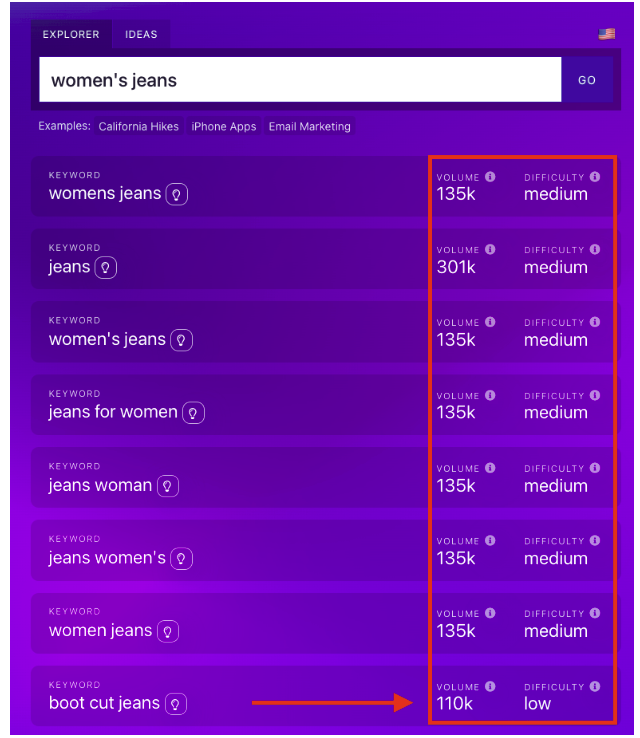
A list of topic ideas for blog posts.
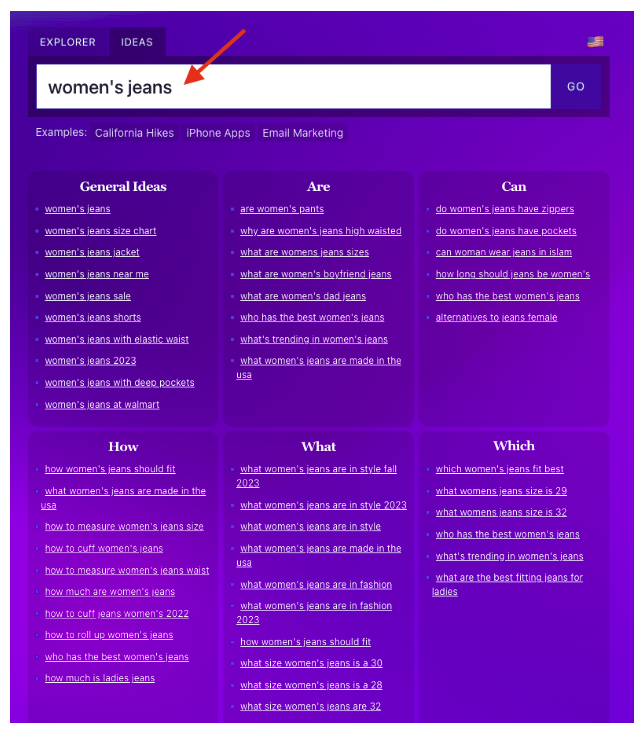
What do you do with this information? There are two approaches. Start with focusing on long-tail keywords (found in the ideas tab).
These are the most valuable keywords because they receive less competition from other websites, also vying for a spot on the first page of Google. The more specific, the better.
For example, suppose your product is a pair of women’s high-waisted straight jeans. In that case, adding those specific terms (instead of “jeans”) to your product descriptions will help you increase conversions — and make sure you’re not missing out on any potential customers.
Here’s what Google returns when searching for the long-tail keyword “women’s high-waisted straight jeans.”
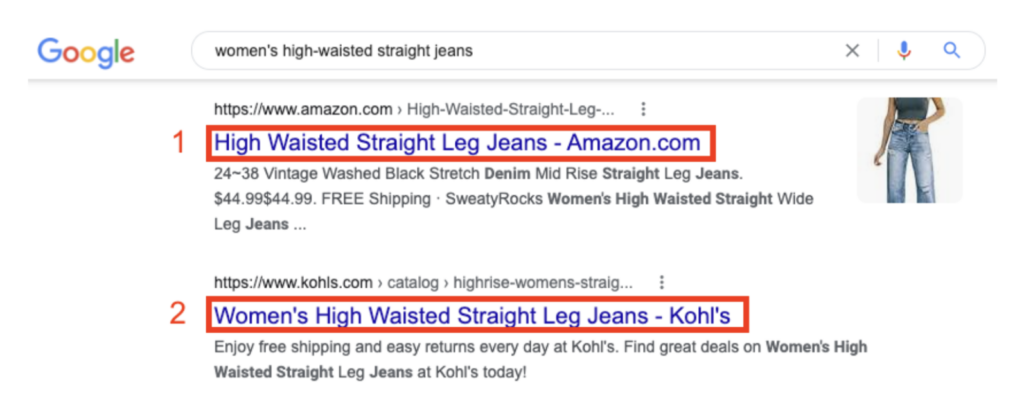
Compare that to this Google search result for the generic keyword “jeans.”
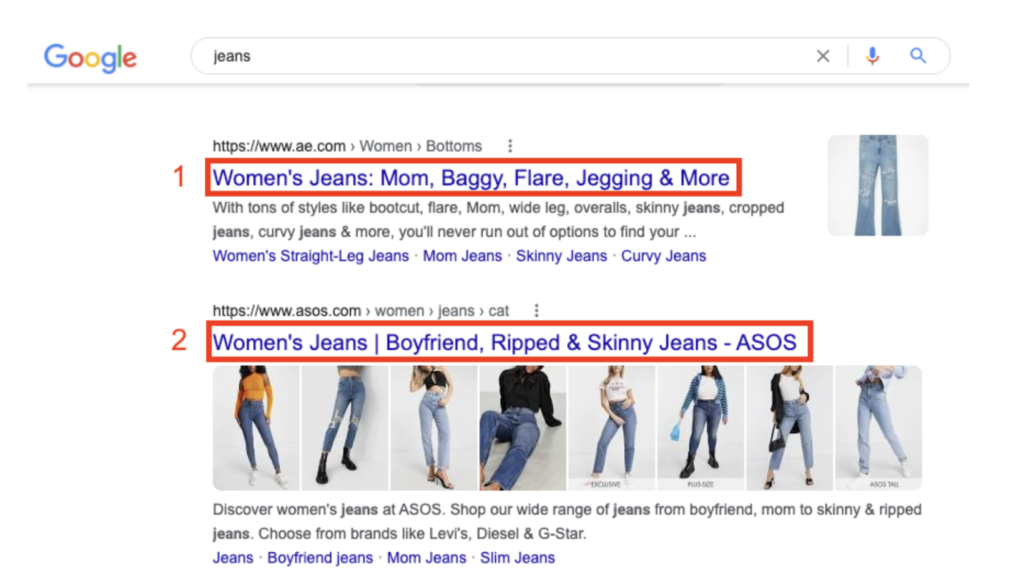
Right off the bat, it shows that different retailers appear for different keywords.
Also, nobody wants to waste their precious time clicking through multiple pages to find the right product. In the generic “jeans” search, the consumer is far more likely to avoid clicking because the result isn’t specific enough.
That’s the first option. The second option is to hone in on keywords with high monthly search volume but low keyword difficulty. That means you have a better chance of ranking for these keywords. And you have the potential to generate a lot of organic traffic.
Here’s an example:
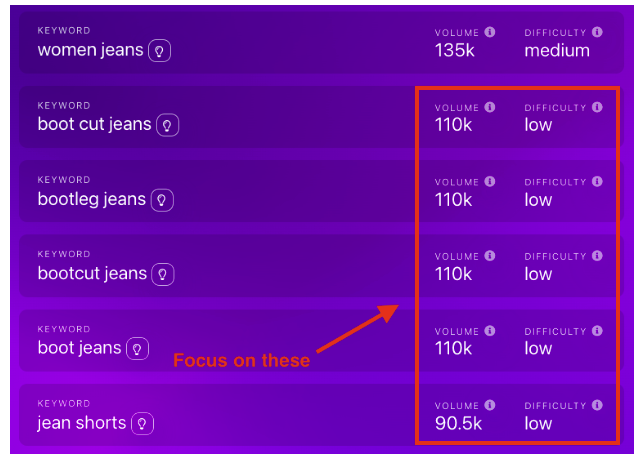
In short, including specific keywords in your product description that your customers are searching for is a proven way to:
- Rank higher on Google
- Get your product in front of the right audience
- Improve conversion rates
3. Write with your buyer persona in mind
Depending on the product you’re selling and the audience you are trying to reach, your copy will require different tones.
AI writer tools like Simplified provide a free product description generator where you can pick a tone of voice and creativity level to help you write product descriptions for each buyer persona.
Add your product/service name, supporting characteristics, and voila. You have the perfect product description that matches the tone of your audience and the quality of your product.
Pro tip: It’s important to have a member of your team review all descriptions before publishing. While AI is a stellar tool to help you streamline this process, it’s wise to have human eyes review it before going live. Measure twice and cut once.
And if you have hundreds of products? Don’t worry. That’s AI’s bread and butter: to produce a high volume of outputs in seconds. It’s a no-brainer.
Not only do AI tools help you write personalized e-commerce product descriptions, but they also help you better understand your ideal customer profile.
How? AI software can learn about the people who buy your products to help you determine the following:
- What language do they want to see when reading product descriptions?
- How much time do they spend reading and browsing?
- How do they interact with your website?
- What products are they interested in?
As a result, everything you need to know about how to cater the shopping experience to match your ideal customer profile.
4. Streamline A/B testing
When talking about how to streamline the product description process using AI tools, the ultimate goal is to increase your conversion rate. A/B testing is a great way to improve your conversion rates. Discover which product descriptions work best as you experiment with different styles and wordings to fit your buyer personas.
If, for example, you have an original version of a product description that describes the benefits of a certain kind of car seat and its features:
“This rear-facing car seat is designed for children up to 25 lbs. The harness straps are adjustable to fit any child from newborns to toddlers, and the headrest has built-in support for neck comfort.”
The original description drove an average of 45 sales per week. Now you want to test another version, focusing less on features and more on the emotional benefits:
“Our car seat keeps kids safe and comfortable when traveling with mom or dad.”
After six weeks, you determine that this emotional product description generated an average of 11 sales per week. Unfortunately, that product description drove lackluster results compared to the first iteration. So, it’s back to the drawing board.
Thankfully, you can test more ideas (faster) by investing in AI software that makes every touch point on your website the best one.
With high-quality data inputs from numerous sources (and the power of machine learning), you can test thousands of iterations in a fraction of the time.
The result? The ability to increase test velocity and win rate without cutting into manual resources for your optimization strategies.
5. Reduce human errors
Sadly, human attention spans are shrinking. Surprisingly, the things that are reducing our attention spans (the internet and digital devices) are also how we’re bridging the newly formed gaps.
Artificial intelligence automation helps reduce human errors in a few simple ways:
- AI automation saves time for humans to focus on higher-level tasks.
- Computers handle the data (so humans don’t have to).
- Validations sit within the process.
Let’s look at an example from a growing sector branching into the e-commerce space of how this relates to writing product descriptions.
Telehealth companies are gaining more and more popularity by offering safe online access to therapy and medication. Thus, these websites must have product descriptions that are accurate and comprehensive enough to provide any visitor with accurate information about the product.
The Hers website is an excellent example of this, where users can read detailed online descriptions of common depression and anxiety medications. It’s unlikely that AI tools are writing medical explanations.
However, AI tools can speed up other processes so that humans have more cognitive load to verify that the information on this product page is accurate.
Hers goes above and beyond to include an asterisk at the bottom of the page, confirming that a professional has medically reviewed the page (Sylvia Valadez, MSN, APRN, FNP-BC).
Consequently, customers feel confident about the information available to them to make these important decisions about their physical and mental health. And when customers stay on your product pages longer, it reduces bounce rate and sends trust signals to Google. A win-win.
Wrapping up
The more you use AI tools to automate your e-commerce strategy, the more time and energy you’ll have for other important tasks to grow your business.
The best thing about these tools is that they constantly evolve to handle new challenges.
AI is the future, and it’s time to jump on the bandwagon. We hope this guide has given you a glimpse into how AI tools can help your technical SEO needs.
